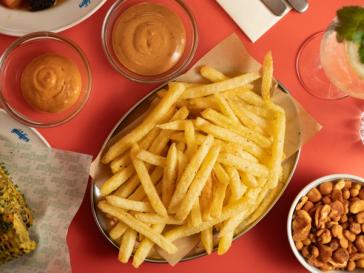
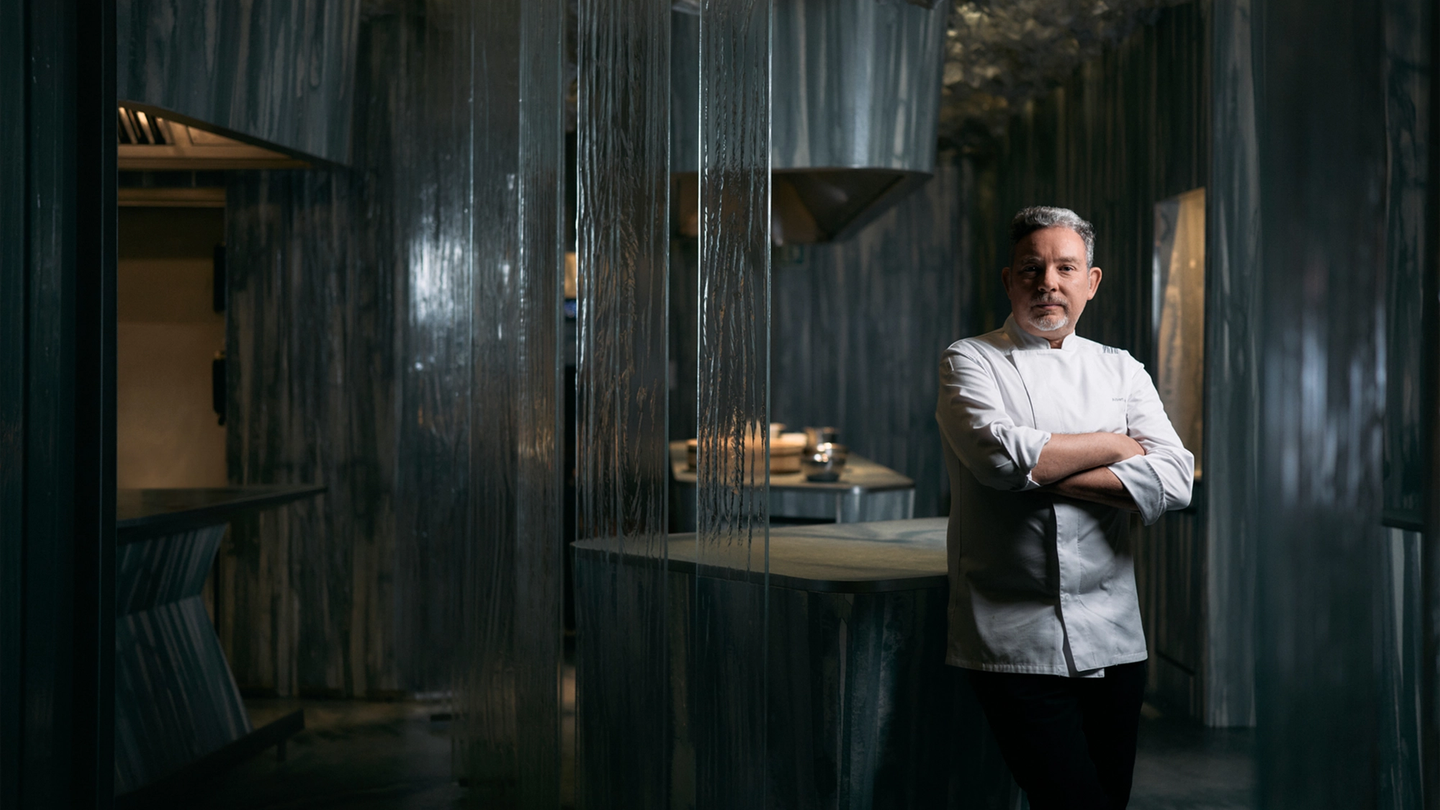
At Enigma, the world’s most important chef is still at the top of his game
Albert Adrià turned heads by reinventing the modern kitchen at the industry-changing El Bulli. Decades on, he continues to lead the charge – now, with a bigger sense of purity
Words: Josh Lee
On a podcast earlier this year, Aisha Ibrahim, formerly of the Seattle fine-diner Canlis, suggested that there’s an importance in finding a balance when cooking at the highest level – that midway point between showcasing the essence of a product and altering it with technique and skill.
Albert Adrià will perhaps be best remembered as the architect of the movement widely labelled as molecular gastronomy – the style of progressive cooking both famous and infamous for resetting the boundaries of cuisine with its radical mix of wit, precision, questioning, science and shock. At The Fat Duck, Heston Blumenthal once served an edible tableau of seashore that was accompanied by an iPod that was hidden in a conch shell and played sounds of waves and seagulls. Grant Achatz, of Chicago’s Alinea, has flavoured balloons. Wylie Dufresne, of New York’s WD-50, created pickled beef tongue with cubes of deep-fried mayonnaise. These were the types of things you couldn’t replicate at home.
Adrià, who was the creative lead of the now-closed Spanish restaurant El Bulli, broadly considered the most influential in dining history, made cold and hot preparations with gelling agents; things with meat juices; dishes with ‘air’; compacts and frozen powders. He upended his menu – the structure of which consisted of 50 or so dishes – every year. He and his brother, Ferran, who co-ran the space, are attributed as the first modern chefs to question the entire operation of the kitchen and the skills taught within it.
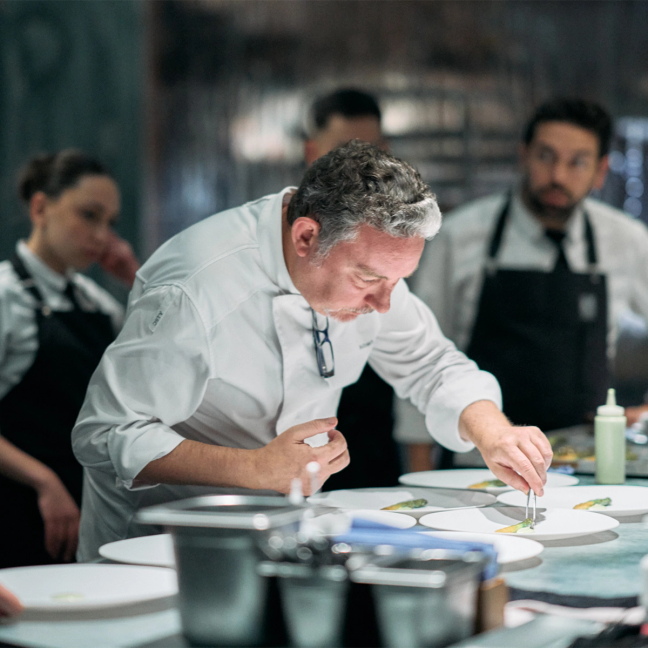
Chef Albert Adrià. All imagery courtesy of Enigma
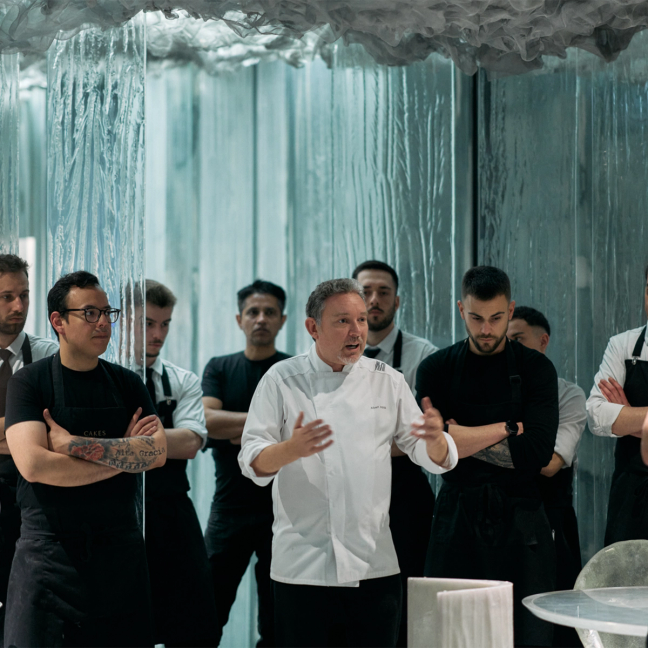
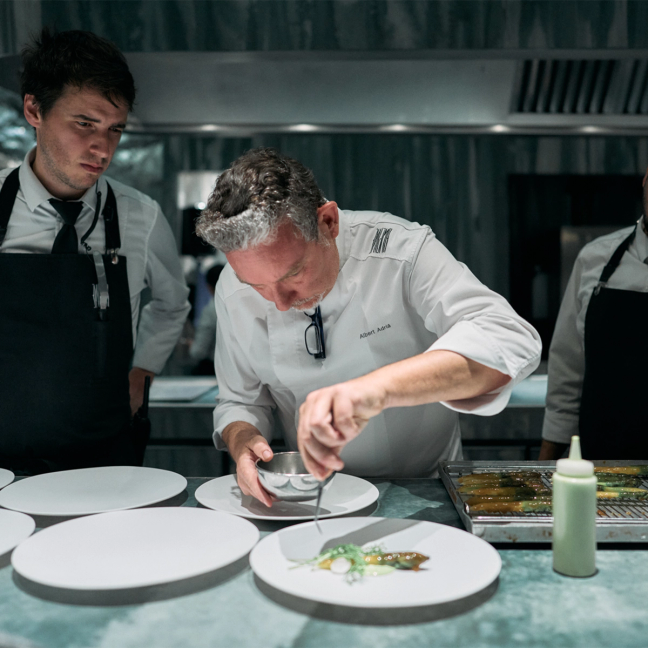
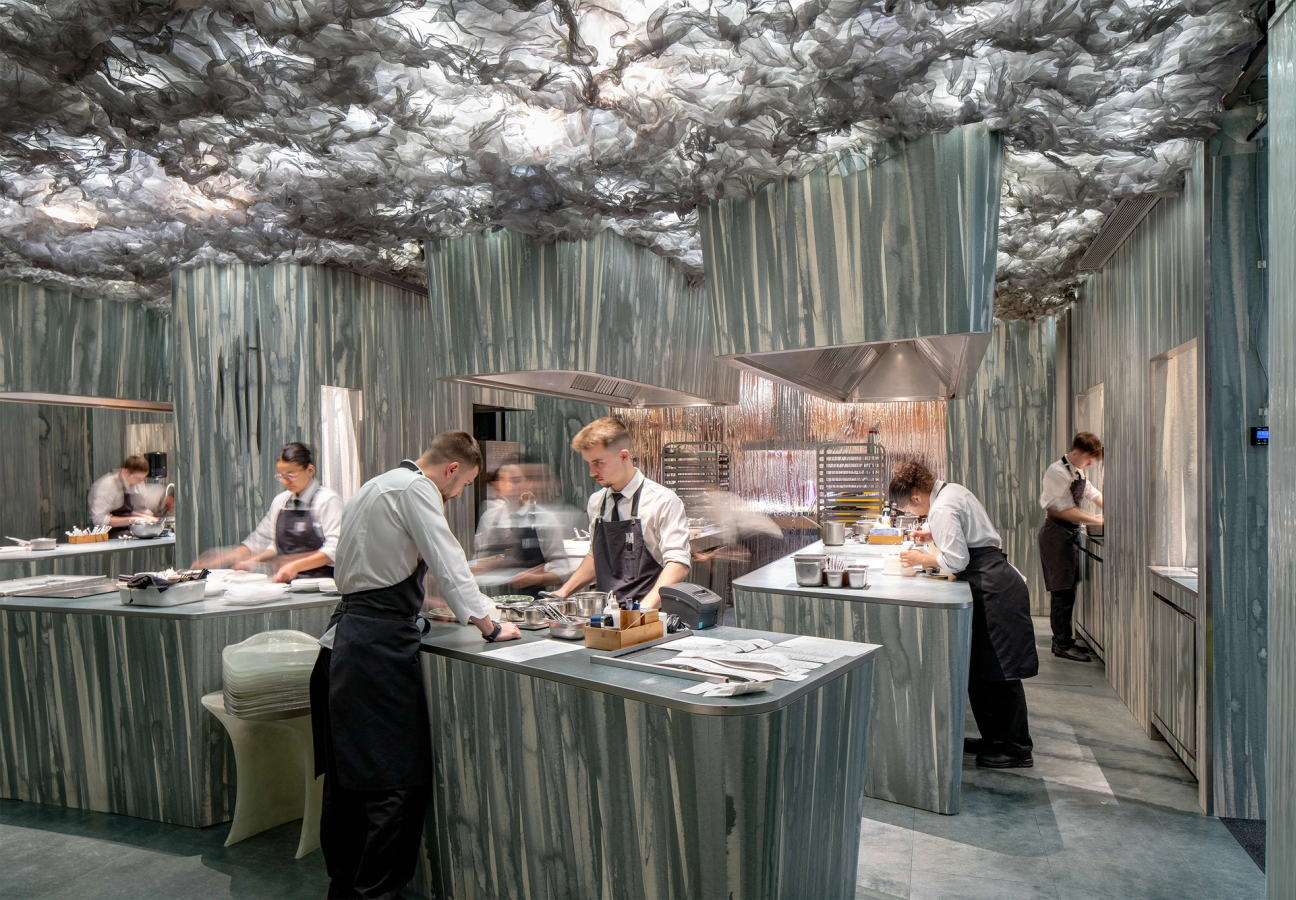
At Enigma, however, Adrià’s restaurant in the Eixample neighbourhood of Barcelona, you get the impression that for all his mastery and imagination and avant-gardism, this is a cook less about showmanship than wanting to amplify what the ingredient is all about.
So, there’s a pastille-shaped cloud that’s been whipped and iced, flavoured with a cocktail of mezcal and lime, decorated with sprinkles of the citrus fruit’s peel, and placed on the tongue before it fades away like last night’s dream. Mozzarella whey is bound together with xanthan gum, albumin, methylcellulose and gelatin, griddled as if it were a French omelette and flooded with sea urchin – and, somehow, it still whispers with the light essence of the stretchy cheese.
A glass box is summoned tableside and displays the loin, belly loin, milt, liver and roe of a mackerel that’s been buried for a day in tarragon. The accompanying wo sun – Chinese lettuce – is pickled with wasabi, resulting in a pure taste that splits the difference between cucumber, celery and watermelon.
Frozen mezcalita 'cloud'
Mozzarella omelette with sea urchin
“To me, the biggest and deepest message that [the Adriàs] left on my soul was the freedom of expression,” the three-star Italian chef Massimo Bottura, who trained at El Bulli, once told me. “I learnt that Parmigiano Reggiano, crust or a sardine were stronger, emotionally, than a mediocre caviar or farm-raised lobster.” Rich restaurants serve prime-rib every night; great restaurants look at populist cheese and lesser coveted fish in the spirit of ambition.
There is a great deal to admire about Adrià. You just know he prefers the solitude of the kitchen over media opportunities. He hasn’t splashed his name over the world, in the style of Nobu Matsuhisa, Gordon Ramsay and Jean-Georges Vongerichten. He likes everyday things, such as checking out produce at the market and spending time with family. He’s a quiet, normal guy. He lives by a simple mantra: shut up and work.
And even with his back catalogue of elaborate, genre-twisting dishes – steamed brioche with rose-scented mozzarella; transparent discs of mango and black olive; a ‘folie’ salad that could be mistaken for a tidal pool – and his restaurant’s futuristic interior that looks like an ice cave on the Star Wars planet Hoth, he brings a certain restraint to the table that, if anything, exhibits a quiet confidence in his narrative.
The bread serving – produced with a meringue made of ‘bread water’, dehydrated in the oven and fixed up with a Sanfilippo anchovy and a few drizzles of good olive oil – is as light as a whisper yet would be firmly welcomed at any old-school tapas joint within the city. There’s a single white asparagus that’s vacuum-cooked, cut into thin tassels that are fanned out like a flamenco dancer’s skirt and soaked in a clear vinaigrette of asparagus miso, extra-virgin olive oil and lemon peel. The diner is encouraged to twist the tip of the shoot to gather the juice. A solitary fioretto, a sweet, slender cauliflower varietal which has been freeze-dried, looks as if it’s been plucked straight from a countryside field. (Often at Enigma – if you couldn’t already tell – servings look more like abstractions than anything resembling dinner, and it’s quite normal for you not to be entirely sure of what you’re eating.)
Though there may be some more complex-appearing dishes – the morel course, with its gentle flavours of coconut, brings to mind the homely pleasures of Thai cuisine; and there’s a vibrant orange-and-yellow composition that’s described as the restaurant’s take on cheung fun – you still cannot help but be taken by the prosaic constructions.
Homemade bread with an anchovy from Cantabria
Elderflower fioretto
The last time I visited Enigma, in 2019, guests were moved from room to room throughout the evening, the type of constantly-in-motion experience you can find at experimental restaurants such as Alchemist, in Copenhagen. These days, the Enigma guest is anchored to one table, with complete attention on what’s placed in front. There are no gimmicks, no tired touchpoints common in white-tablecloth fine-dining. There is a certain purity here. “I am the chef now,” Adrià says, suggesting that his energy is mainly channelled into Enigma nowadays following the closing of his other Barcelona restaurants during the Covid years.
A small ribbon of orange peel is blanched 10 times and infused in an orange reduction for 24 hours before being amplified with a jelly of its own reduced juice.
You’ll be told that another sweet serving, one that kind of looks like something you’d stumble across on the dusty pathway of a canyon, is actually a semi-dehydrated chocolate mousse served hot. Sure, the techniques and presentation are unconventional – but the dish still honours a flavour as old as time. It is the mark of a chef both certain and unwavering in his voice.
- Enigma, Carrer Sepúlveda 38–40, 08015, Barcelona, Spain, enigmaconcept.es
Want more restaurant reviews? These are London’s best Japanese spots…

